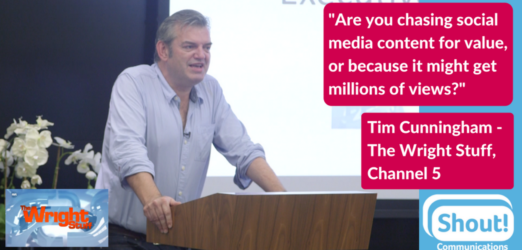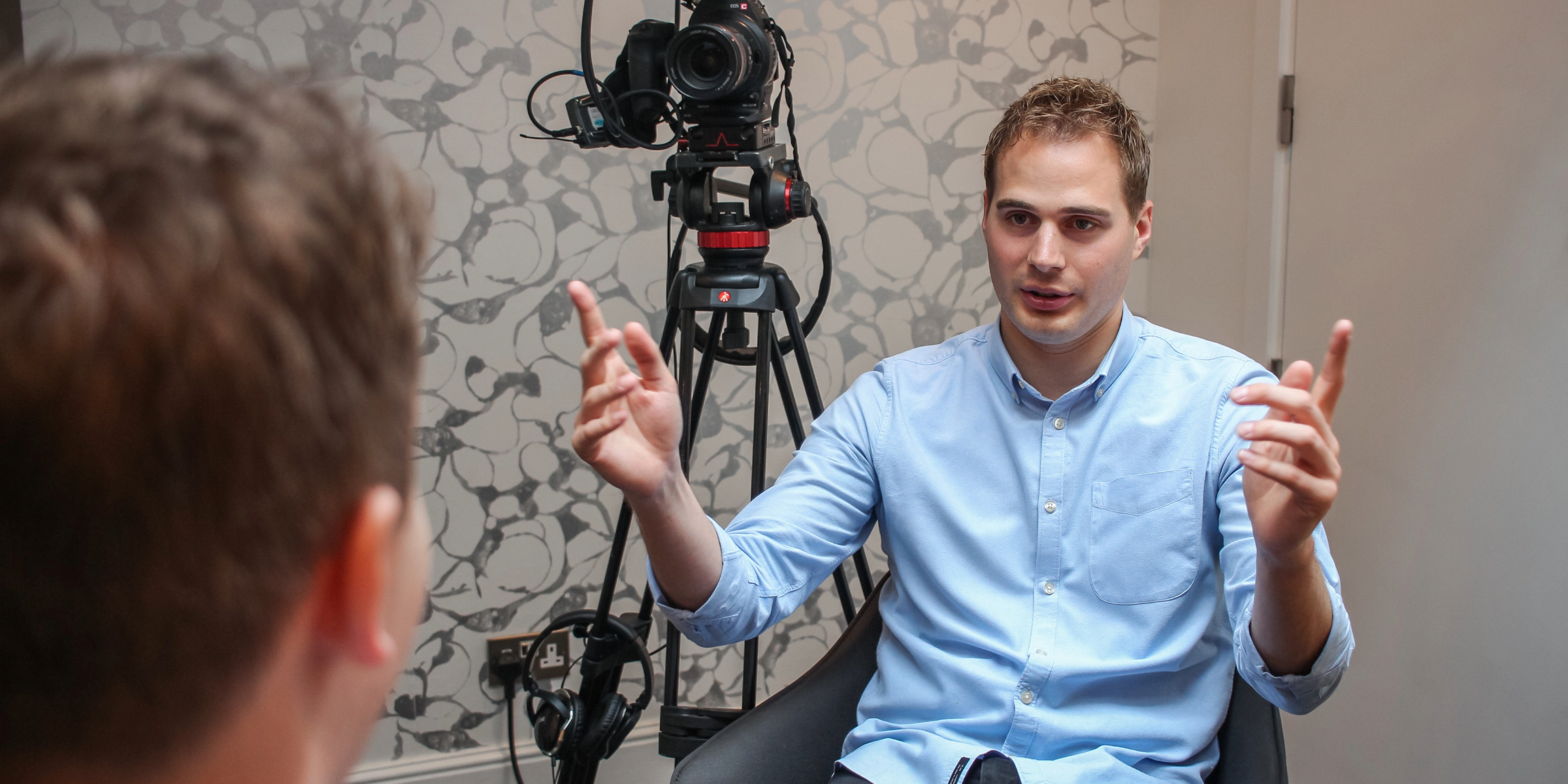How social media has affected broadcasters and audience interaction?
Last week Shout! Communications hosted another ‘Big Talk’ event with our latest insightful speakers, who took the stage to give their take on the changing landscapes of broadcast. First up was Tim Cunningham, Executive Producer of The Wright Stuff on Channel 5. Tim has been with the show for more than eight years now and had a lot to say about social media in particular. This blog will focus on his main talking points and – more importantly – what it all means for PR.
It goes without saying, social media has changed the way broadcasters reach their audience. However, it also changes the way they get their own information through research and increases the amount of non-traditional competition out there. While our world is now more informed and connected than ever, that creates a few issues for shows such as The Wright Stuff. Tim spoke about how useful Twitter and Facebook can be for finding content and audience views, but also stressed it needs to be treated just as any other source.
“It (social media) can give you a lot of content quite quickly, but you still need to have all the usual checks.” – Tim Cunningham
With ‘fake news’ always seemingly in the news, producers like Tim need to be constantly aware of unreliable sources and everyday people sensationalising on social media. Modern technology means anyone can make up a story and share it or Photoshop an image to be something it’s not, so checking your sources is even more important than ever. It’s completely naïve to believe everything you see online!
One thing that has certainly changed since social media developed to what it is now is the ability to profile an audience and see what’s ‘trending’ or what gets the best reaction. Tim said his team use platforms like Twitter and Facebook to get an initial response before researching anything or deciding to run a topic on the show. As he said, it’s a great way to gauge interest! Something that generates debate and gets people talking is obviously the kind of thing Matthew Wright will want to feature. Think – could you use social media before your next PR campaign to do the same thing? Of course you have to be cautious; as Tim pointed out you have to consider who will respond on social media and if they are really representative of the nation’s average opinion.
“16 million British people have a Twitter account, but studies have shown that’s a relatively small number of highly active viewers who dominate… You can go on Twitter and think that’s how the country feels, but actually it’s giving you a very skewed view…”
Just because something is trending doesn’t mean everyone agrees, despite how it may come across on Twitter. Tim pointed out how we’re more likely to follow people or organisations who share similar views to us, so we may not see much outside of that. While we have endless access to information, we can also now ignore more!
When it comes to PR professionals working successfully with programmes such as The Wright Stuff, Tim had one simple piece of advice – know your stuff! It’s not always about sending a story to as many producers as possible and waiting to see if something comes back. You are more likely to get a positive response if your pitch is tailored to certain shows or, at the very least, relevant. While this seems like a no-brainer, I’m sure you can think of a few examples where you’ve pitched to a producer who’s said “we’d never do anything on that, our show covers…” and felt a bit silly. To avoid moments like this, do your research and start tuning in! It will certainly pay off in the long run and result in better opportunities for your clients.
At the same time, there’s no harm in sounding out a producer if you have an initial idea for a story. Tim said he’s always happy to have a chat if he’s approached in the right way, and the same goes for many other producers too. In summary, think before you pitch, and get to know the social media for the great tool it is! Our next blog will feature talking points from our second Big Talk speaker, Ronan Hughes from Sky News, and his top tips on providing pictures for TV and breaking news.
If you’d like to watch the talk back in full, please click below:



